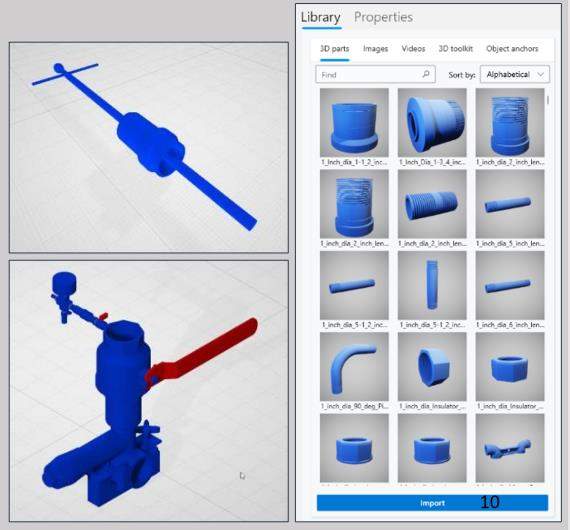In an era of rapid technological advancement, industries across the spectrum are grappling with the challenge of bridging the skill gap and preparing their workforce for the future. The gas industry, undergoing significant growth and change, is no exception. Enter the groundbreaking initiative: the HoloLens-Based Training Library, developed in conjunction between NYSEARCH and CraneMorley. This article delves into the transformative potential of this library, how it’s set to revolutionize training, and its impact on the gas industry.
Empowering the Workforce through XR Technologies
The HoloLens-Based Training Library represents a paradigm shift in how industries approach employee training. XR (Mixed, Augmented, and Virtual Reality) technologies, like the Microsoft HoloLens, are at the forefront of this change. NYSEARCH recognizes the potential of XR technologies in closing the skill gap that has led to a shortage of skilled workers, especially in the gas industry.
The library, currently in development, is designed to be a shared asset hub, housing a wealth of digital content that can be leveraged for training programs. This content is not only accessible for digital learning but can also be seamlessly integrated with XR technologies. The anticipated benefits are manifold, including accelerated technology adoption, cost savings, standardized content, enhanced training flexibility, and improved knowledge sharing.
Meeting Industry Challenges Head-On
The gas industry faces dual challenges: expansion driven by growth and infrastructure replacement, and the urgent need to train a new, younger workforce amidst retirements and turnover exacerbated by the COVID-19 pandemic. The traditional methods of training, which combine classroom instruction and field experience, often fall short in replicating real-world scenarios. This is where the HoloLens comes into play.
The HoloLens is a game-changer, offering an immersive Augmented Reality (AR) experience that brings 3D reality to various training tasks. It enables trainees to experience real-life conditions, accelerating their learning curve and making the process more accurate and efficient. With the release of the HoloLens 1 in 2016, Microsoft paved the way for users to develop their applications, setting the stage for innovative training methods.
From Vision to Reality: The Development Journey
NYSEARCH’s journey with the HoloLens started with pilot testing in 2018, followed by the development of customized training applications by AR contractors. The library’s evolution continued with the identification of new contractors, such as CraneMorley, Inc., which created a range of custom applications for various gas operations using the HoloLens 2.
A remarkable development emerged during Phase III – the realization that the gas distribution sector shared numerous training needs. This insight paved the way for the HoloLens-Based Training Library, aiming to centralize content, identify common training requirements, and foster collaborative knowledge sharing among member companies.
Unveiling the HoloLens-Based Training Library
The crux of the initiative lies in the creation of a shared asset library that encompasses a wide array of digital training content. This includes videos, eLearning modules, job aids, Dynamics 365 Guides modules, and more. The library serves as a dynamic resource, allowing users not only to access but also to upload content, fostering a collaborative ecosystem.
Guided by a roundtable comprised of NYSEARCH consortium members, the library’s approach and execution ensure a customized and relevant production of content. Regular meetings help identify key training areas and select content for cultivation, ensuring that the library remains a robust and evolving repository.
Shaping the Future of Workforce Training
The success of the HoloLens-Based Training Library hinges on the collective effort of consortium members, industry stakeholders, and digital content creators. As digital assets continue to be cultivated and refined, the library’s potential to reshape workforce training in the gas industry becomes increasingly evident. With its commitment to innovation and collaboration, NYSEARCH paves the way for a future where skill gaps are a thing of the past and workers are empowered with cutting-edge training methods.
In conclusion, the HoloLens-Based Training Library stands as a testament to the transformative power of XR technologies. By bridging the gap between traditional training methods and the demands of a rapidly evolving industry, this initiative has the potential to not only meet the challenges faced by the gas industry but also to set new standards for workforce training across sectors. As the library continues to develop and evolve, it holds the promise of a more skilled, efficient, and empowered workforce, ready to navigate the complex demands of the modern world.




